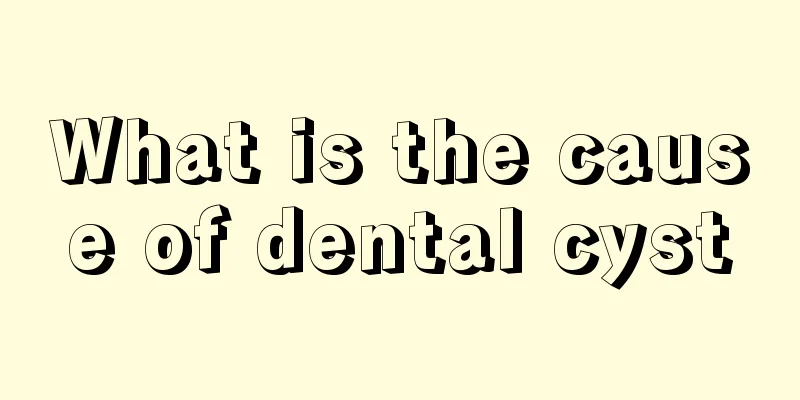What is the cause of dental cyst

|
Dental cysts are often caused by cystic degeneration of the stellate reticular layer of the enamel organ, and this disease often occurs in young people. In this case, it is recommended that patients first undergo some dental examinations to confirm the cause of the disease and then take treatment measures according to their own situation. 1. Dentigerous cyst develops from normal dental follicles during tooth development. It is caused by cystic degeneration of the stellate reticular layer of the enamel organ, and the fluid around the dental follicles infiltrates between the crown and the epithelium. It is more common in young patients. It occurs more frequently in the mandible than in the maxilla. 2. Periodontal cysts and dentigerous cysts grow slowly, but they can continue to grow and compress the maxillary sinus bone, causing it to become thinner and displaced, or they can grow directly into the maxillary sinus. A huge cyst can destroy the walls of the maxillary sinus and cause bulges in the cheeks, oral vestibule, hard palate and alveolar process. The tension can cause the eyeball to shift upward and outward, or expand into the nasal cavity and cause nasal congestion. When there is no infection, there is often no typical local pain. 3. Clinical diagnosis can be made based on the results of dental examination, maxillary sinus puncture, X-ray (sinus radiography - plain film or injection of contrast agent into the cyst cavity), etc. If there is a bulge in the cheek or oral vestibule, palpation may reveal that there is a smooth and elastic lump underneath, like the feeling of pressing a ping-pong ball or a broken eggshell. 4. Periodontal cysts are more common in older people. They can be single or multiple, and are more common at the roots of lateral incisors. The contents of the cyst are thin and transparent, and some are turmeric or sauce-colored liquids containing cholesterol. 5. Dentigerous cysts occur in younger people and are most common as single cysts. It often occurs on incisors and upper third molars, but can also occur on supernumerary teeth. The contents of the cyst are clear, dark brown or brown liquid containing cholesterol. On X-rays, the shadow of a periodontal cyst shows that the root of the diseased tooth protrudes into the cyst cavity. On the film of the dental cyst, it can be seen that there is a single or several complete teeth or crowns in the cyst, the position of which is not fixed, and the crowns protrude into the cyst cavity. |
<<: What are the symptoms of ophthalmoplegia
>>: How to whiten a dark complexion?
Recommend
What kind of underwear should I wear?
Girls still have a lot to pay attention to when c...
How to teach yourself acupuncture?
Acupuncture is a method with a very long history ...
What material is good for pajamas
Good sleep is a wonderful experience of life and ...
What to do if you have tinnitus after radiotherapy
Although radiotherapy can effectively reduce the ...
Can osteoarthritis be cured?
Osteoarthritis can be treated with medication. Me...
What are the symptoms of severe potassium deficiency
Severe potassium deficiency should be paid specia...
What happens if you drink the oil directly?
Edible oil is an indispensable food in people'...
My jaw always makes noises when eating
The chin is an important part of the human body a...
What are the ways to prevent skin cancer
With the progress of life, according to statistic...
Can foot soaking cure insomnia?
We usually use the method of foot soaking in wint...
What are the factors that cause nasopharyngeal carcinoma
Nasopharyngeal cancer is more common in men, and ...
Is nasopharyngeal cancer hereditary?
Can nasopharyngeal cancer be inherited? This is w...
How long does it take for bladder cancer to develop
There is no time limit. The main clinical manifes...
How to massage breasts to make them bigger, you need to know these two acupoints
With the trend of society, many women want to hav...
Is it normal to have bloating after ovarian cancer surgery?
Is bloating normal after ovarian cancer surgery? ...









